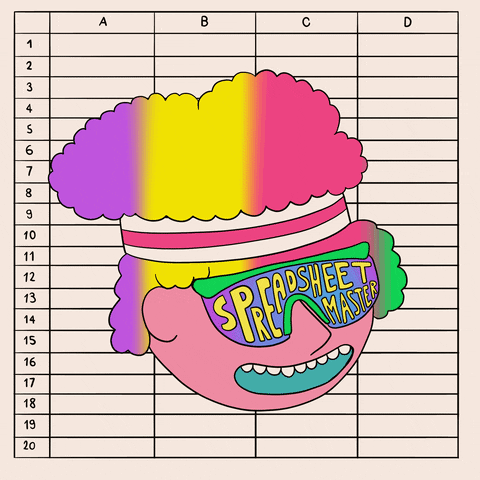Google Sheets, part of the Google Workspace suite, has transformed the way individuals and teams manage data. This powerful tool allows you to create, edit, and share spreadsheets online, making it accessible from any device with an internet connection. Whether you are a student managing your assignments, a business professional tracking expenses, or a project manager organizing tasks, Google Sheets provides a versatile platform to meet your needs.
The cloud-based nature of this application ensures that your work is saved automatically, reducing the risk of losing important information. Google Sheets has a user-friendly interface that simplifies the process of data entry and manipulation. The ability to collaborate in real-time with others enhances productivity and encourages teamwork.
You can invite colleagues or classmates to view or edit your spreadsheet, allowing for seamless communication and feedback. This collaborative feature is particularly beneficial when timely decision-making is crucial. With Google Sheets, you can harness the power of data to drive insights and make informed choices.
Stay sharp – subscribe to Teracore for more tips and resources >
Key Takeaways
- Google Sheets is a powerful tool for organizing, analyzing, and visualizing data and information.
- Organize data and information effectively by using features such as sorting, filtering, and grouping.
- Utilize formulas and functions to perform complex calculations and automate repetitive tasks.
- Collaborate with team members in real-time by sharing and editing worksheets together.
- Create visualizations and charts to present data in a clear and compelling way.
- Automate tasks with scripts to save time and increase efficiency.
- Integrate Google Sheets with other Google apps such as Google Forms and Google Docs for seamless workflow.
- Maximize efficiency in Google Sheets with tips and tricks such as keyboard shortcuts and add-ons.
Organizing Data and Information
Creating Multiple Sheets
You can create multiple sheets within a single workbook, allowing you to categorize data based on different criteria. For example, if you’re managing a project, you might have separate sheets or tab for timelines, budgets, and task assignments.
Sorting and Filtering Data
You can utilize features like sorting and filtering to manage your data efficiently. Sorting allows you to arrange your information in ascending or descending order, based on specific columns, making it easier to identify trends or outliers. Filtering enables you to display only the data that meets certain criteria, which is particularly useful when dealing with large datasets.
Enhancing Data Analysis
By mastering these organizational tools, you can enhance your ability to analyze and interpret data effectively. With a well-structured dataset, you can make informed decisions, identify patterns, and gain valuable insights that can drive business success.
Utilizing Formulas and Functions

One of the standout features of Google Sheets is its extensive library of formulas and functions. These tools enable you to perform calculations and manipulate data with ease. Whether you need to sum a column of numbers, calculate averages, or find the maximum value in a dataset, formulas can save you time and reduce the likelihood of errors.
You can enter formulas directly into cells, and Google Sheets will automatically update the results as your data changes. Functions in Google Sheets are designed to simplify complex calculations. For example, the VLOOKUP function allows you to search for a value in one column and return a corresponding value from another column.
This is particularly useful when working with large datasets where manual searching would be impractical. By familiarizing yourself with these formulas and functions, you can streamline your data analysis processes.
Collaborating with Team Members
Collaboration is at the heart of Google Sheets, making it an ideal tool for teams working on shared projects. You can easily invite others to view or edit your spreadsheet, by sharing a link or sending an email invitation. This real-time collaboration feature allows multiple users to work on the same document simultaneously.
Users can see changes as they happen, making it easier to discuss ideas and make decisions on the fly. In addition to real-time editing, Google Sheets offers commenting features that enhance communication among team. You can leave comments on specific cells or sections of the spreadsheet, providing context or asking questions. This feature helps keep discussions organized, and ensures that everyone is on the same page. By leveraging these collaborative tools, you can improve teamwork and drive better outcomes for your projects.
Stay sharp – subscribe to Teracore for more tips and resources >
Creating Visualizations and Charts
Data visualization is essential for interpreting complex information quickly and effectively. Google Sheets provides a range of charting options that allow you to transform raw data into visually appealing graphics. You can create bar charts, line graphs, pie charts, and more with just a few clicks.
These visualizations help convey your findings clearly, and make it easier for others to understand the insights derived from your data. Customizing your charts is straightforward. You can adjust colors, labels, and styles to match your preferences or branding requirements.
Additionally, charts are dynamic; they update automatically as you modify the underlying data in your spreadsheet. This feature ensures that your visualizations remain accurate and relevant, without requiring manual adjustments. By incorporating charts into your presentations or reports, you can tell a visual story with your data and engage your audience more effectively.
Automating Tasks with Scripts

For those looking to take their Google Sheets experience to the next level, automation through scripts offers powerful possibilities. Google Apps Script allows you to write custom scripts that automate repetitive tasks within your spreadsheets. Whether it’s sending automated emails based on certain triggers, or generating reports at scheduled intervals, scripting can save you significant time and effort.
Creating scripts may seem daunting at first, but Google provides ample resources and documentation to help you get started. You can find pre-built scripts in the Google Sheets Marketplace, or create your own from scratch using JavaScript-like syntax. Once you become comfortable with scripting, you’ll find that automating tasks dramatically increases your efficiency, and reduces the likelihood of human error in repetitive processes.
Integrating with Other Google Sheets Apps
Google Sheets seamlessly integrates with other applications within the Google ecosystem, enhancing its functionality even further. For instance, you can easily import data from Google Forms into your spreadsheet for analysis or export your findings directly into Google Slides for presentations. This integration streamlines workflows and ensures that all your tools work together harmoniously.
Using Google Drive as a central hub for storing your worksheets allows for easy access across devices and platforms. You can organize your files into folders, share them with team members, and collaborate in real-time, without worrying about version control issues. By leveraging these integrations, you can create a cohesive workflow that maximizes productivity and minimizes friction in your projects.
Stay sharp – subscribe to Teracore for more tips and resources >
Tips and Tricks for Maximizing Efficiency
To truly harness the power of Google Sheets, consider implementing some tips and tricks that can enhance your efficiency. First, familiarize yourself with keyboard shortcuts. These can significantly speed up your workflow, by allowing you to perform actions without relying on mouse clicks. For example, using Ctrl + C to copy and Ctrl + V to paste can save precious seconds during data entry.
Another useful tip is to utilize templates. Whether you’re creating budgets, project trackers, or schedules, starting with a template can save time, and provide a solid foundation for your work. You can customize these templates according to your specific needs while benefiting from pre-designed layouts and formulas.
Lastly, regularly reviewing and cleaning up your spreadsheets can prevent clutter from accumulating over time. Remove unnecessary rows or columns, consolidate information where possible, and ensure that your data is accurate and up-to-date. By maintaining organized spreadsheets, you’ll find it easier to navigate through information and derive insights.
Conclusion
Google Sheets is an invaluable tool for anyone looking to manage data effectively. From organizing information, to collaborating with team members and automating tasks, its features cater to a wide range of needs. By mastering its functionalities and implementing best practices, you can maximize efficiency and unlock new possibilities in your work with data.
Before using Google Sheets, ensure that your Google Account is protected! LastPass is a password manager that can help you securely store and manage your passwords, across all your devices. Check out this article on LastPass tips and tricks to see how you can streamline your online security practices.
Stay sharp – subscribe for tips and tools >
FAQs
What is a Google Worksheet?
A Google Worksheet is a digital spreadsheet application that allows users to create, edit, and share spreadsheets online. It is part of the Google Drive suite of productivity tools.
What are the features of Google Worksheet?
Google Worksheet offers features such as real-time collaboration, automatic saving, built-in formulas and functions, data visualization tools, and the ability to import and export data in various formats.
How can I access Google Worksheet?
You can access Google Worksheet by signing in to your Google account and navigating to Google Drive. From there, you can create a new spreadsheet or open an existing one.
Can I use Google Worksheet offline?
Yes, Google Worksheet has an offline mode that allows you to create, edit, and view spreadsheets without an internet connection. You will need to enable offline access in Google Drive settings.
Is Google Worksheet free to use?
Yes, Google Worksheet is free to use for individuals and businesses. It is included as part of the Google Drive suite of productivity tools.
Can I collaborate with others on a Google Worksheet?
Yes, Google Worksheet allows for real-time collaboration, meaning multiple users can work on the same spreadsheet simultaneously. Users can also leave comments and suggestions for others to review.
What file formats can I import and export in Google Worksheet?
Google Worksheet supports importing and exporting spreadsheets in formats such as Microsoft Excel (.xls, .xlsx), CSV, and PDF, among others. This allows for easy sharing and compatibility with other spreadsheet applications.



